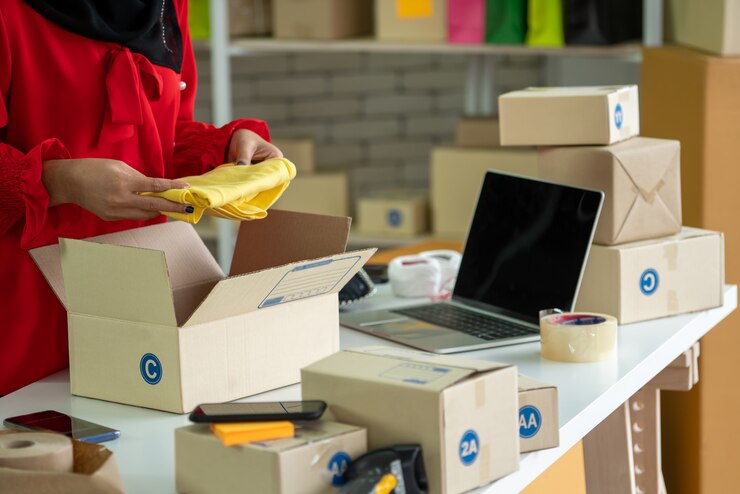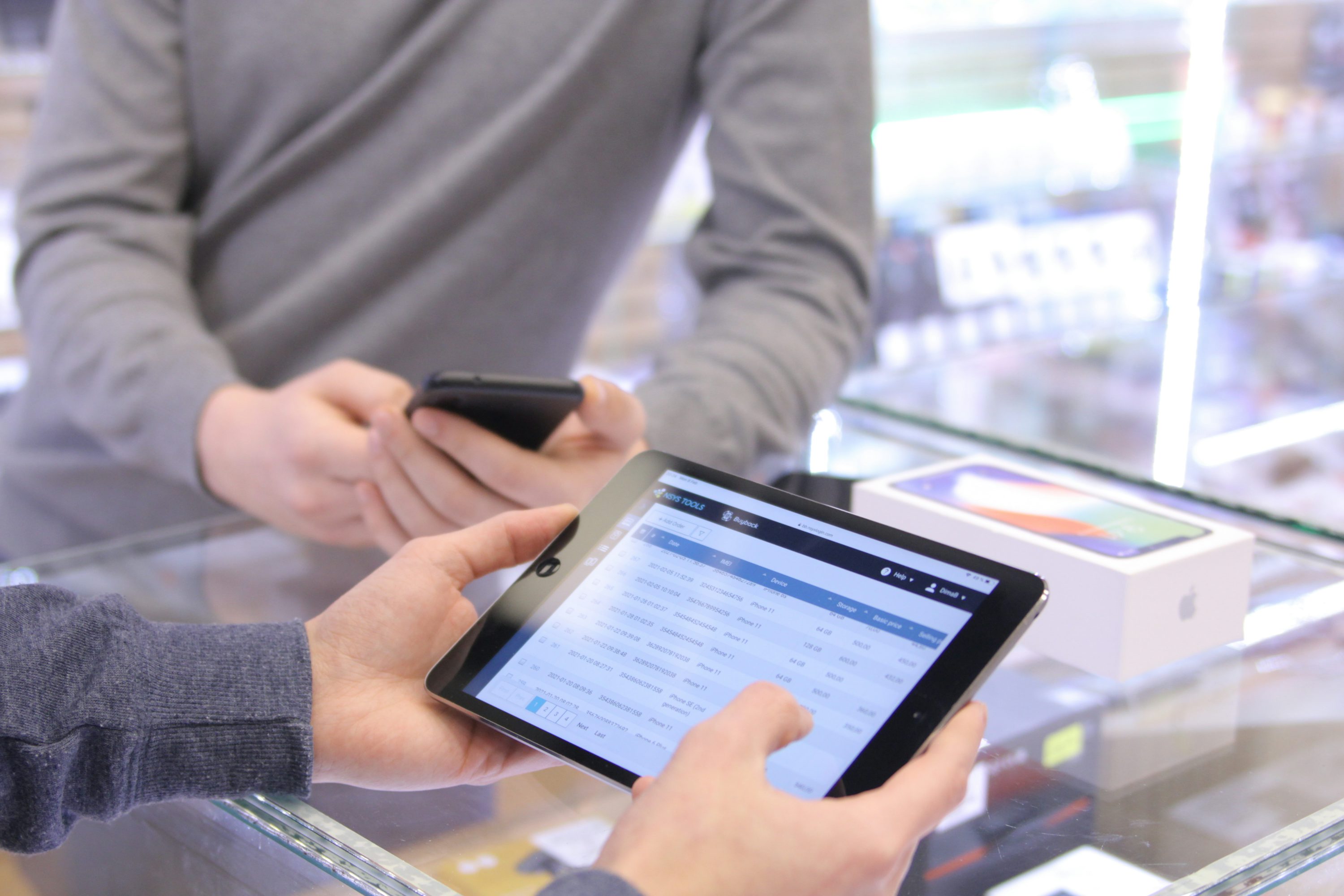A dropshipping business plan establishes a clear path from launch to growth. This plan outlines your vision, mission, and strategic goals. The dropshipping model is attractive for newcomers due to its low barrier to entry and minimal overhead costs.
The beauty of this model lies in its simplicity: online retailers sell products they don’t physically hold in inventory, allowing them to focus more on marketing and customer acquisition rather than logistics and supply chain management.
This flexibility and reduced risk make dropshipping enables an appealing venture for aspiring entrepreneurs.
Understanding the Mobile Tech Market Landscape
The mobile tech industry is booming, driven by the rise of mobile gaming and increasing smartphone adoption. Mobile gaming has transformed the way consumers interact with their devices, creating a surge in demand for gaming accessories like mobile controllers offered by Razer.
Consumers are also increasingly interested in functional accessories that enhance their mobile experience. Products such as:
- wireless chargers
- Bluetooth earbuds
- screen protectors are no longer optional but essential for the modern mobile user. These trends signify a robust market demand, where niche gadgets are carving out significant spaces for themselves.
Google Trends can be a valuable tool to gauge the popularity of specific mobile tech products. By analyzing search data, you can identify spikes in interest and adjust your inventory accordingly. This approach helps you stay ahead of the competition and meet the evolving needs of your target market.
Understanding market demand is critical. It allows you to tailor your marketing strategies to align with consumer interests. For instance, mobile controllers and other niche gadgets are experiencing strong demand, which can be leveraged in your marketing strategy to attract a more engaged audience.
As you delve into this market, it’s essential to keep an eye on emerging trends and consumer preferences. Continuous market analysis enables you to adapt and evolve your product offerings, ensuring your dropshipping business remains relevant and profitable.
Setting Up Your Dropshipping Store

Setting up your dropshipping store involves several critical steps. Choosing the right ecommerce platform and ecommerce platforms is the first step. This platform should not only align with your interests but also cater to market demand. Popular ecommerce store platforms like Shopify and WooCommerce offer robust features that can support your dropshipping business and dropshipping stores.
Selecting a reliable supplier is crucial, as they handle inventory and shipping, directly impacting customer satisfaction. Building strong relationships with multiple suppliers ensures that you find reliable suppliers and a third party supplier for your customers to receive their orders promptly and in good condition.
Creating a strong brand identity is essential for standing out in the competitive dropshipping market. This involves designing a memorable logo, crafting a compelling brand story, and consistently using your brand elements across all marketing channels. Optimizing product pages with detailed descriptions, high-quality images, and clear call-to-actions can significantly enhance the customer experience.
Integrating apps to streamline fulfillment is another important aspect. Tools like Oberlo and Spocket can automate order processing, tracking, and customer communication, making your dropshipping process more efficient. Ensuring your website is mobile-optimized is also crucial, given the increasing number of mobile shoppers.
Managing Logistics and Global Fulfillment

Managing logistics and global fulfillment is a critical aspect of running a successful dropshipping business. Working closely with suppliers and handling inventory indirectly are key components of this process. By choosing reliable suppliers and utilizing an effective retail fulfillment method, you can ensure that your customers receive their orders on time and in good condition.
Partnering with trusted logistics providers ensures smooth global delivery. Reliable couriers like DHL offer robust international shipping solutions that can help you reach customers worldwide. These partnerships are essential for maintaining customer satisfaction and ensuring timely deliveries.
Handling shipping costs and delays is another important aspect of managing logistics. Shipping costs can significantly impact your profit margins, so it’s crucial to find a balance between affordability and reliability. Additionally, having a plan in place to address potential shipping delays can help you manage customer expectations and maintain their trust.
The dropshipping model allows you to manage inventory without physically holding stock. This approach reduces overhead costs and minimizes the risks associated with unsold inventory. By leveraging various dropshipping tools, you can automate inventory management and streamline the fulfillment process.
Marketing Strategies to Attract a Mobile-Centric Audience
Attracting a mobile-centric audience requires a well-rounded marketing strategy. Omnichannel marketing helps connect with customers across various platforms, increasing the chances of conversion by meeting them where they are. This approach ensures that your marketing efforts are cohesive and reach a broader audience.
User-generated content, such as customer reviews and testimonials, enhances credibility and transparency for your dropshipping brand. Encouraging satisfied customers to share their experiences can build trust and attract new customers.
Influencer partnerships are particularly effective in reaching mobile users. Collaborating with influencers who have a strong presence on platforms like Instagram, TikTok, and Facebook can significantly boost brand awareness and engagement. Mobile-first ad design ensures that your ads are optimized for mobile viewing, increasing their effectiveness through influencer marketing.
Platforms like Instagram, TikTok, and Facebook are crucial for targeting mobile users. These platforms offer powerful advertising tools that allow you to reach your target audience with precision. Engaging with potential customers in online communities can also help build word-of-mouth and direct traffic to your dropshipping site.
Offering Value Through Trade-Ins and Upsells

Offering value through trade-ins and upsells can significantly boost your dropshipping business. Consider the following approaches:
- Partner with platforms that accept trade-ins to attract customers looking to upgrade their devices.
- Utilize programs like M1, where customers can trade in old devices, adding value to your store.
- Encourage repeat purchases by integrating trade-in options into your business model.
Offering upsells is another effective strategy to increase average order value. Suggesting complementary products or premium versions of items in your store enhances the customer experience and boosts sales. This approach not only increases your profit margins but also provides customers with more options to meet their needs.
Promoting local trade-in programs through your store sells can also add value. By highlighting these programs, you can attract customers who are interested in recycling their old devices and purchasing new ones. This strategy not only boosts sales but also positions your store as environmentally conscious.
Encouraging repeat purchases through providing excellent customer service and customer support is crucial for building a loyal customer base. A seamless shopping experience, timely responses to inquiries, and after-sales support can significantly enhance customer satisfaction and encourage repeat business, all of which are essential components of customer relationship management.
Offering value through trade-ins and upsells attracts new customers, increases average order value, and builds a loyal customer base. These strategies are essential for the long-term success of your dropshipping business.
Conclusion
Starting a mobile tech dropshipping business has immense potential. Strategic planning, niche selection, and reliable fulfillment partners are key to navigating the challenges of this ecommerce business model. Crafting a tailored dropshipping business plan is essential for starting a dropshipping business and setting clear goals and operational strategies.
Regular updates to your business plan are crucial as they reflect changes in market dynamics, new products, and overall business growth. Maintaining a clear vision and measurable goals within your business plan helps ensure that you stay focused on your success in the dropshipping sector.
Encourage readers to start small, test products, and scale with data-driven decisions. This approach allows you to minimize risks and make informed decisions that drive your business forward.
Frequently Asked Questions
1. What is dropshipping, and how does it work?
Dropshipping is a retail model where you sell products without holding any inventory yourself. When a customer makes a purchase, you buy the item from a supplier who ships it directly to them, keeping your costs low and risk minimal.
2. What are some high-potential products to dropship in the mobile tech niche?
Wireless chargers, Bluetooth earbuds, and gaming accessories are great choices to dropship in the mobile tech niche. They’re in high demand and offer strong appeal to consumers.
3. How do I choose a reliable supplier for my dropshipping business?
To choose a reliable dropshipping supplier, focus on those with positive reviews and a strong service record on platforms like AliExpress and Amazon. This ensures better inventory management and customer satisfaction.
4. What marketing strategies are effective for attracting a mobile-centric audience?
To effectively attract a mobile-centric audience, focus on omnichannel marketing and leverage platforms like Instagram and TikTok. Prioritize vibrant visual and user-generated content to engage your audience meaningfully.
5. How can I increase the average order value in my dropshipping store?
To increase your average order value, try offering upsells and suggesting complementary products that enhance what the customer is already buying. This not only adds value but also encourages repeat purchases and boosts your overall sales.






